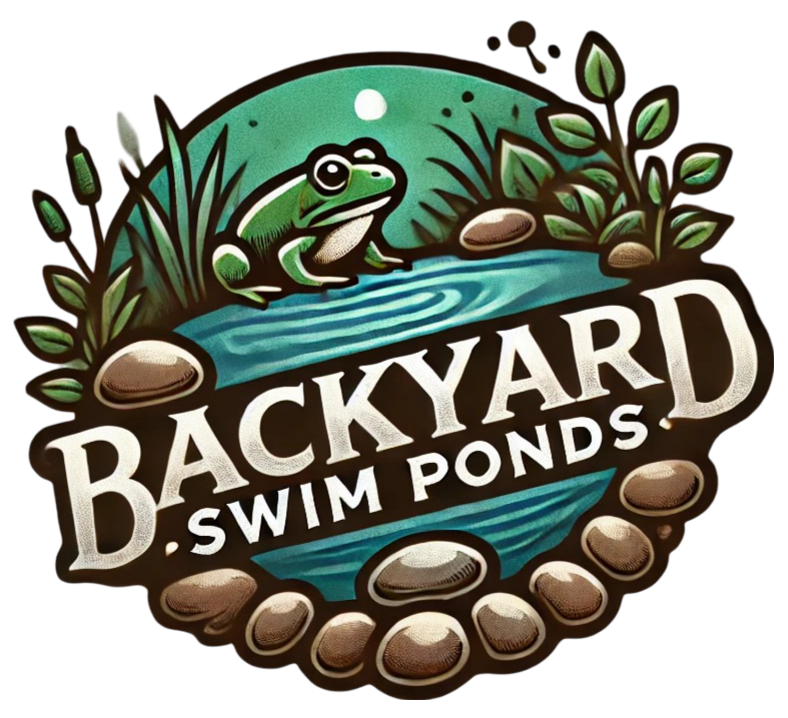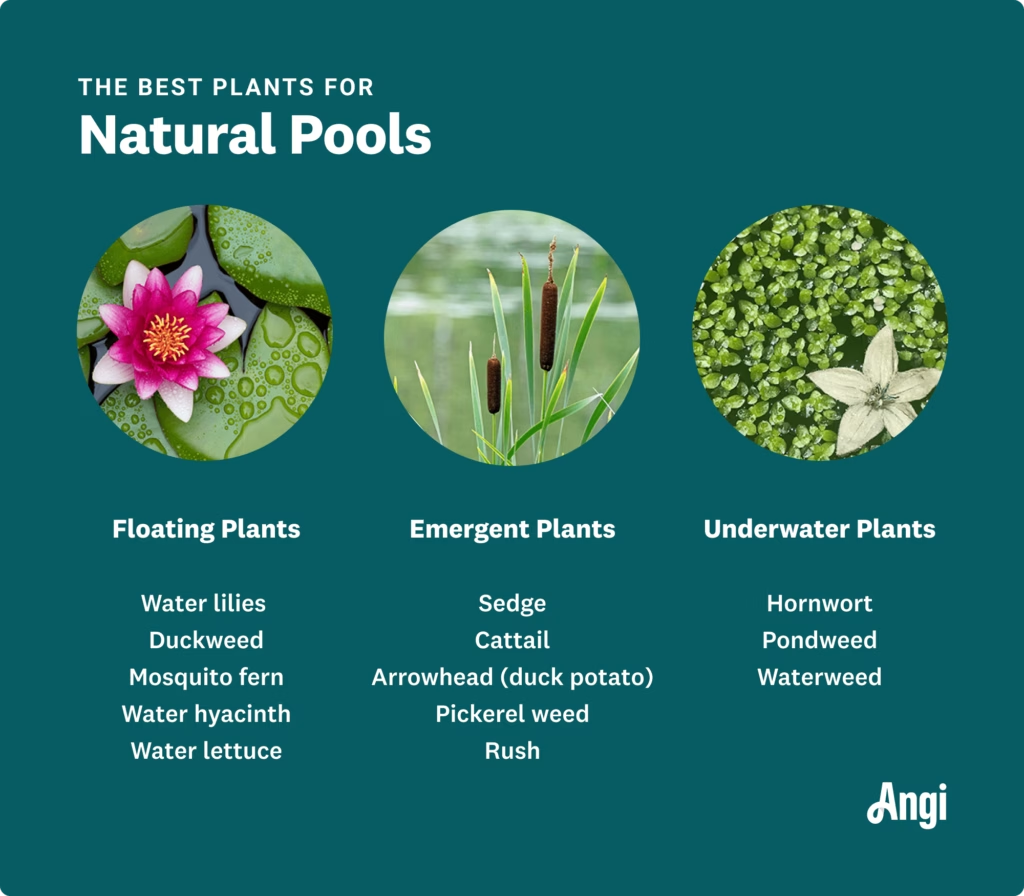Maintaining a natural swim pond can be a rewarding experience that allows you to enjoy the beauty of nature while offering a refreshing swimming environment. However, achieving clear and healthy water can be a challenge. This guide will provide you with natural methods and DIY potions to enhance swim pond clarity. By understanding how your pond ecosystem functions and utilizing organic solutions, you can create an environment that benefits both aquatic life and your swimming experience.
Natural swimming ponds serve as eco-friendly alternatives to traditional pools, utilizing natural processes rather than chemicals to maintain water quality. Incorporating a variety of aquatic plants into your pond not only absorbs excess nutrients that could lead to algae blooms but also improves overall water clarity. By using these natural methods, you foster a healthier environment and enhance your enjoyment of the swim pond.
In this guide, you will discover effective organic treatments, seasonal maintenance tips, and practical steps for preparing natural solutions like barley straw and leaf enzymes. Regardless of your experience level in managing ponds, this article provides valuable knowledge and tools needed for achieving a clear and vibrant swim pond.
Harnessing Nature’s Filter: The Power of Aquatic Plants
Aquatic plants are essential to the health and clarity of your swim pond. They help purify the water by filtering out impurities and absorbing excess nutrients. Some of the most effective aquatic plants include water hyacinth, cattails, pickerelweed, and yellow flag iris. These plants not only enhance the beauty of your pond but also play a vital role in maintaining water quality.
Infographic displaying various aquatic plants beneficial for natural pools (Source: Angie’s List)
For instance, water hyacinth can remove as much as 95.87% of nitrogen and phosphorus from the water. Similarly, cattails and pickerelweed are effective in trapping sediments and reducing impurities. By creating a balanced mix of submerged, floating, and emergent plants, you foster a natural filtration system that promotes clear water.
These plants also provide crucial habitats for local wildlife, contributing to the biodiversity of your swim pond. When selecting plants, aim for a diverse arrangement that can effectively compete with algae for nutrients, ensuring your pond remains an inviting space.
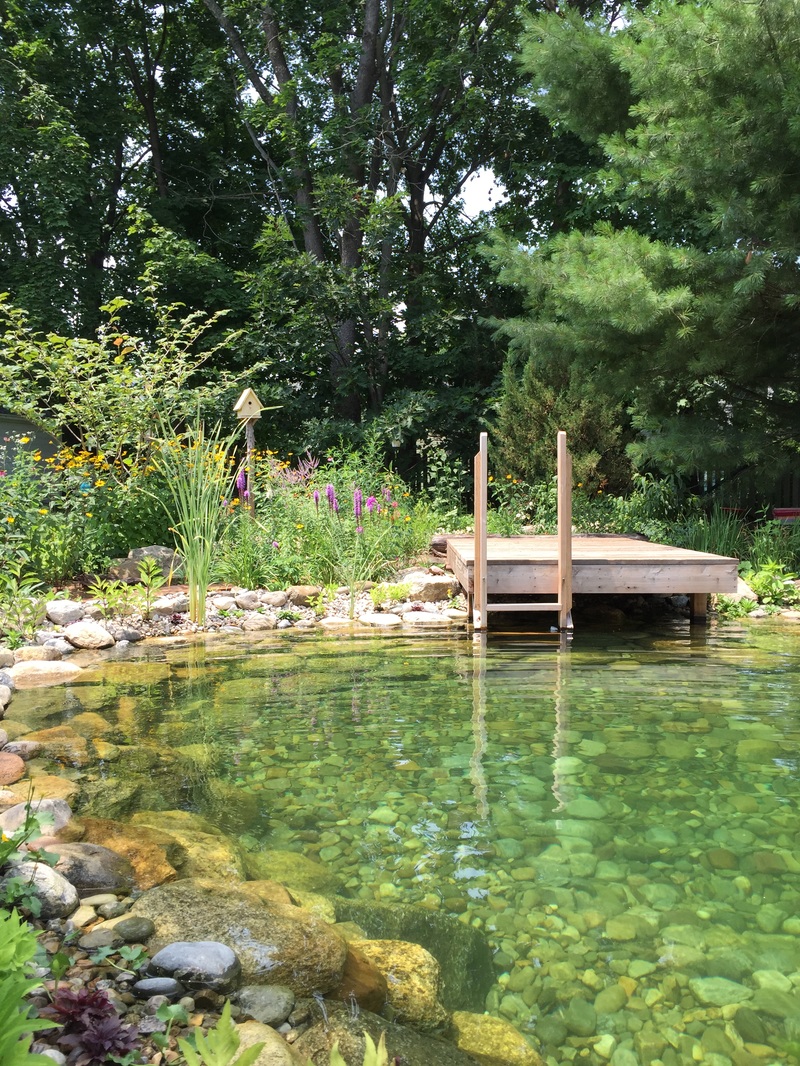
Clear swim pond showcasing aquatic plants (Source: Total Habitat)
Using Environmental Allies: Seasonal Materials for Maintenance
Seasonal changes bring unique challenges and opportunities for maintaining the clarity of your swim pond. By understanding how to leverage seasonal materials, you can enhance water quality throughout the year.
In spring, it’s important to perform a thorough clean-up. Remove debris, clean accumulated sludge, and monitor water quality closely. Adding beneficial bacteria can help jump-start biological processes and promote a healthy ecosystem.
During the warmer months of summer, provide shade through floating plants or islands to reduce temperature fluctuations and limit algae growth. Make sure to monitor water quality weekly; higher temperatures can lead to rapid changes in nutrient levels.
As autumn arrives, fallen leaves can become a major concern. They introduce excess nutrients that can lead to unwanted algae blooms. Utilizing leaf nets can help keep your pond clean without harming its natural ecosystem. In winter, while biological activity slows down, ensure that a part of the pond remains accessible for gas exchange to prevent harmful build-up under the ice.

Seasonal maintenance calendar for garden ponds (Source: Shopify)
By preparing and adapting your maintenance strategies for each season, you can significantly improve your pond’s clarity and enhance its thriving ecosystem.
No Chemicals Needed: Natural Treatments for Crystal Clear Water
If you’re hesitant about using chemicals in your swim pond, there are effective natural alternatives. Barley straw is well-known as a natural flocculant that helps clear algae by releasing compounds that inhibit growth as it decomposes. This process typically takes 1 to 2 weeks to become fully effective, with its benefits lasting anywhere from four to six months.
Research shows that barley straw can reduce algae growth by 50-90%. Other natural treatments like chitosan and moringa seeds are also viable options for improving water clarity. Chitosan, which is derived from shellfish exoskeletons, can reduce turbidity by as much as 95% within hours.
When preparing these natural treatments, pay close attention to dosage and application methods to maximize their effectiveness. For instance, it’s recommended to use about 2-3 bales of barley straw per acre of surface area.

Instructional image depicting the application of barley straw in ponds (Source: Clear Water PLM)
By opting for these natural treatments, you’re not only keeping your pond safe for both humans and aquatic life, but also enhancing its beauty and clarity without relying on harmful chemicals.
Lay the Groundwork: Optimizing Filtration with Natural Materials
Selecting the right filtration materials and techniques is crucial for maintaining optimal water clarity in your swim pond. Natural materials like gravel and stones filter water effectively and help cultivate a healthy ecosystem.
For biological filtration, 3/8″ to 3/4″ round granite gravel is recommended. This size allows optimal water flow while providing ample surface area for beneficial bacteria to thrive. A layered filtration system enhances efficiency; consider starting with larger rocks at the bottom, followed by medium gravel, and topping it off with flat river stones.

Illustration of a swim pond filtration system with multiple layers of gravel and stones (Source: Contentful)
Choosing the appropriate materials aids in trapping nutrients while effectively filtering out impurities, ensuring a clearer pond. It’s advisable to avoid limestone and crushed concrete, as these can leach minerals that may disrupt water chemistry.
Implementing a natural filtration system will help you create a thriving swim pond that is enjoyable for both you and your guests.

Customer installing rocks and gravel for swim pond filtration (Source: Contentful)
Navigating the Seasons: Maintenance Strategies for Every Time of Year
Maintaining a swim pond entails adapting your approach throughout the year. Each season presents distinct tasks and challenges that, when addressed properly, lead to clarity and health in your pond.
Spring often brings warmer temperatures that can spur biological activity, potentially leading to algae blooms. A thorough clean-up is recommended to remove debris and monitor water quality closely. Gently reintroducing aquatic plants once the water temperature exceeds 50°F (10°C) will help support a healthy ecosystem.
Summer presents its own challenges, including increased evaporation and rapid algae growth. Regularly monitor water quality and consider increasing aeration to maintain oxygen levels. Providing shade with aquatic plants helps to lower water temperatures and minimize algae growth.
As autumn sets in, fallen leaves can increase nutrient levels and spur algae blooms. Using leaf nets can mitigate this issue, while reducing fish feeding is essential as their metabolism slows due to cooler temperatures.
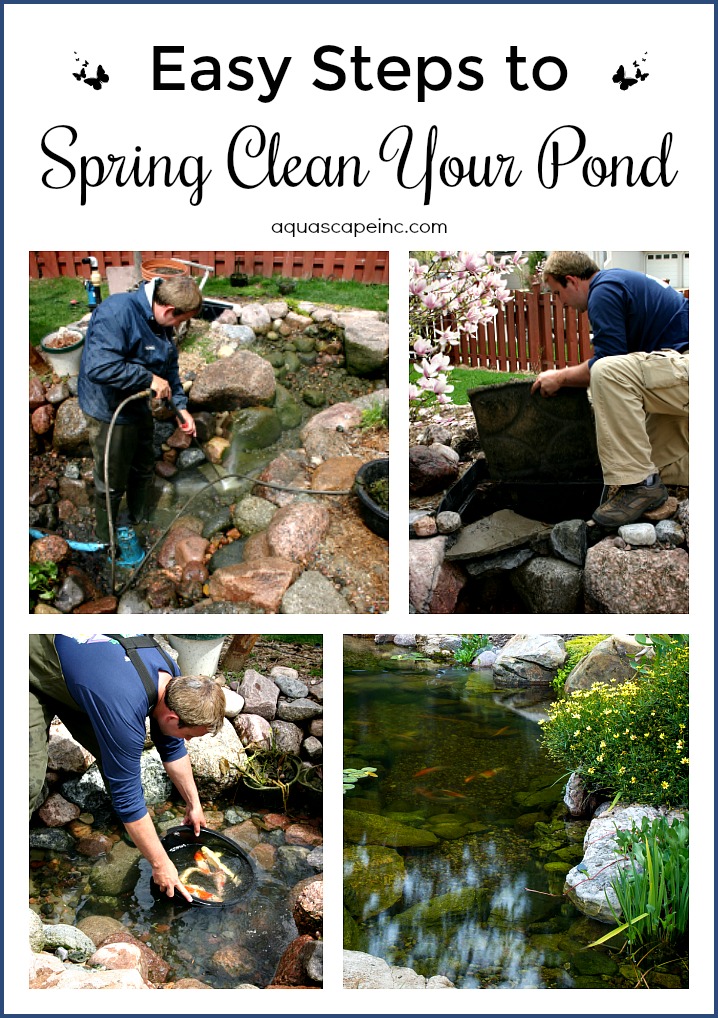
Visual guide summarizing seasonal maintenance strategies for ponds (Source: Aquascape Inc.)
In winter, biological activity subsides significantly. Keeping a portion of the pond accessible for gas exchange, using a pond heater or aerator as needed, prevents harmful gas accumulations.
By understanding seasonal changes and adjusting your strategies accordingly, you can maintain clarity and a healthy pond year-round.
Understanding the Legal Landscape: Navigating Swim Pond Regulations
Owning a natural swim pond involves compliance with various local regulations that you should be aware of. These laws can differ based on your location and may require attention to ensure your pond is maintained safely and legally.
In many jurisdictions, natural swim ponds exceeding a certain size—commonly over 200-300 square feet—will need permits. Environmental impact assessments may also be required, which can take time to complete.
Safety regulations often include requirements for fencing around swim ponds, similar to pools. Typical mandates require a fence of at least 4-5 feet in height, equipped with self-latching gates. In certain areas, you may be permitted to use automatic safety covers in place of traditional fencing.
Staying informed about these legal thresholds ensures your pond meets safety standards as outlined by local authorities. Consulting with experts in your area can provide additional clarity on compliance issues.
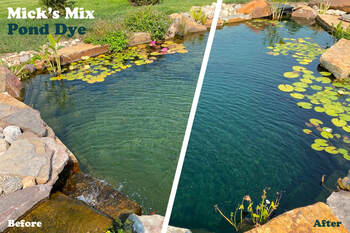
Infographic outlining key legal requirements for maintaining natural pools (Source: Total Habitat)
Final Thoughts: Embracing Nature for a Healthy Swim Pond
In conclusion, maintaining a natural swim pond involves a commitment to understanding and nurturing the ecosystem. By utilizing natural methods, organic treatments, and seasonal strategies, you not only achieve crystal-clear water but also foster a thriving habitat for wildlife and plant life.
Promoting sustainable practices in your pond care will yield long-term benefits, including improved water quality and enhanced biodiversity. Engaging with local community groups can provide support and insights as you maximize your pond’s potential.
A well-managed swim pond not only integrates the enjoyment of swimming but also invites the tranquility of nature into your backyard. By adopting these natural methods, you can create a beautiful and vibrant pond that enhances your outdoor living experience for years to come.

Serene image illustrating a diverse ecosystem in a swim pond (Source: MidSouth Ponds)
With the knowledge in this guide, you are now equipped to maintain your swim pond naturally and effectively. By implementing these practices, you can foster a crystal-clear pond that serves as a beautiful and functional feature in your yard.
